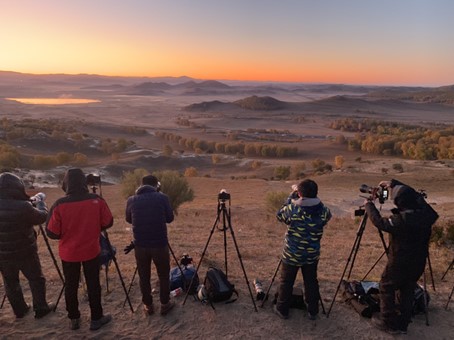Table of Contents
This blog post may contain affiliate links. As an Amazon Associate I earn from qualifying purchases.
While there are a lot of great resources out there for budding photographers to learn about the technical aspects of photography (this website included!), there is often a lack of information about the basic artistic principles of photography. That’s why we wanted to cover the basics, what makes a good photo and why?
The 8 Core Concepts of Photography
There are 8 core concepts that every photographer should be aware of when they take a photo.
- Composition
This refers to the way elements within the frame are arranged. It includes things like the placement of subjects, the use of lines, shapes, and patterns, and the overall balance of the image. Photographers can use techniques like the rule of thirds, leading lines, and framing to create visually interesting compositions. For example, a photograph with a clear diagonal line running from the bottom left corner to the top right corner can create a sense of movement and dynamism in the image. Good composition can make a photo more visually interesting and pleasing to the eye. It’s also important to be aware of negative space, which is the area around the subject and can make the subject stand out more. You should keep the “rule of thirds” in mind when framing your subject. - Lighting
Photography is the art of capturing light, and the way light is used can greatly affect the mood and atmosphere of an image. Photographers can use natural or artificial light and can manipulate it to create different effects. For example, using sidelight to create dramatic shadows and highlights on a subject can add depth and interest to a portrait. On the other hand, using a back-light to create a silhouette can create a sense of mystery and intrigue. Distinct types of light can create different moods and atmospheres in a photo. For example, warm light from a sunset can create a romantic and peaceful feeling, while harsh light from the sun can create a dramatic and intense feeling. - Emotion
A good photograph should evoke an emotion in the viewer. It’s important to consider what message or feeling you want to convey in your photograph. An image with a strong emotion can be more powerful and memorable than an image that is just technically correct. - Colour
Colour can be used to create mood and emotion in an image. Photographers can choose to work in colour or black and white and can also manipulate colour to create different effects. For example, using a cool, blue colour palette can create a sense of calm and tranquillity, while using warm, orange tones can create a sense of energy and vitality. - Texture
Photography can be used to capture texture, whether it be in a subject or in the background. Photographers can use texture to add depth and interest to an image. For example, a photograph of a rough, textured wall can create a sense of age and history, while a photograph of a smooth, glossy surface can create a sense of modernity and sleekness. - Perspective
Perspective refers to the point of view from which the image is taken. Photographers can use different perspectives to create different effects and to give the image a sense of depth. For example, a photograph taken from a low angle can make a subject look powerful and dominant, while a photograph taken from a high angle can make a subject look small and insignificant. - Movement
Photographers can use motion blur to convey movement in an image, giving a sense of speed and dynamism to the scene. For example, a photograph of a car in motion with the background blurred and the car in focus can give the sense of speed and movement. - Storytelling
Photography can be used to tell stories and convey ideas. Photographers can use a variety of elements like composition, light, colour, texture, perspective, movement and context to create a narrative in an image. For example, a photograph of a person standing alone in a crowded street can tell a story of isolation and loneliness, while a photograph of a family sitting together on a couch can tell a story of togetherness and warmth.
Ready To Start Your Photography Journey?
Photography is about capturing a moment in time, and these artistic elements can make the photograph more interesting and meaningful. It’s also important to keep in mind that photography is a personal and subjective art form, so don’t be afraid to experiment with different techniques and styles to find your own unique voice as a photographer.

